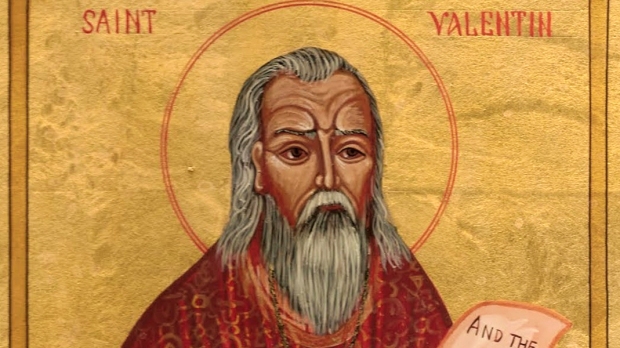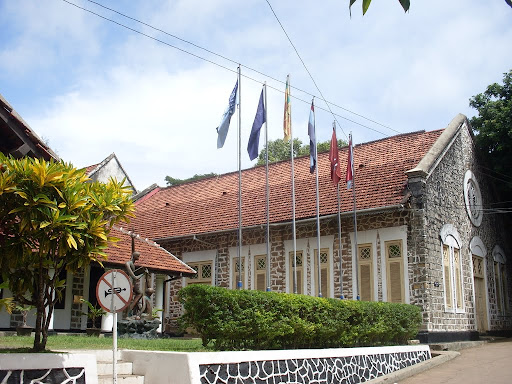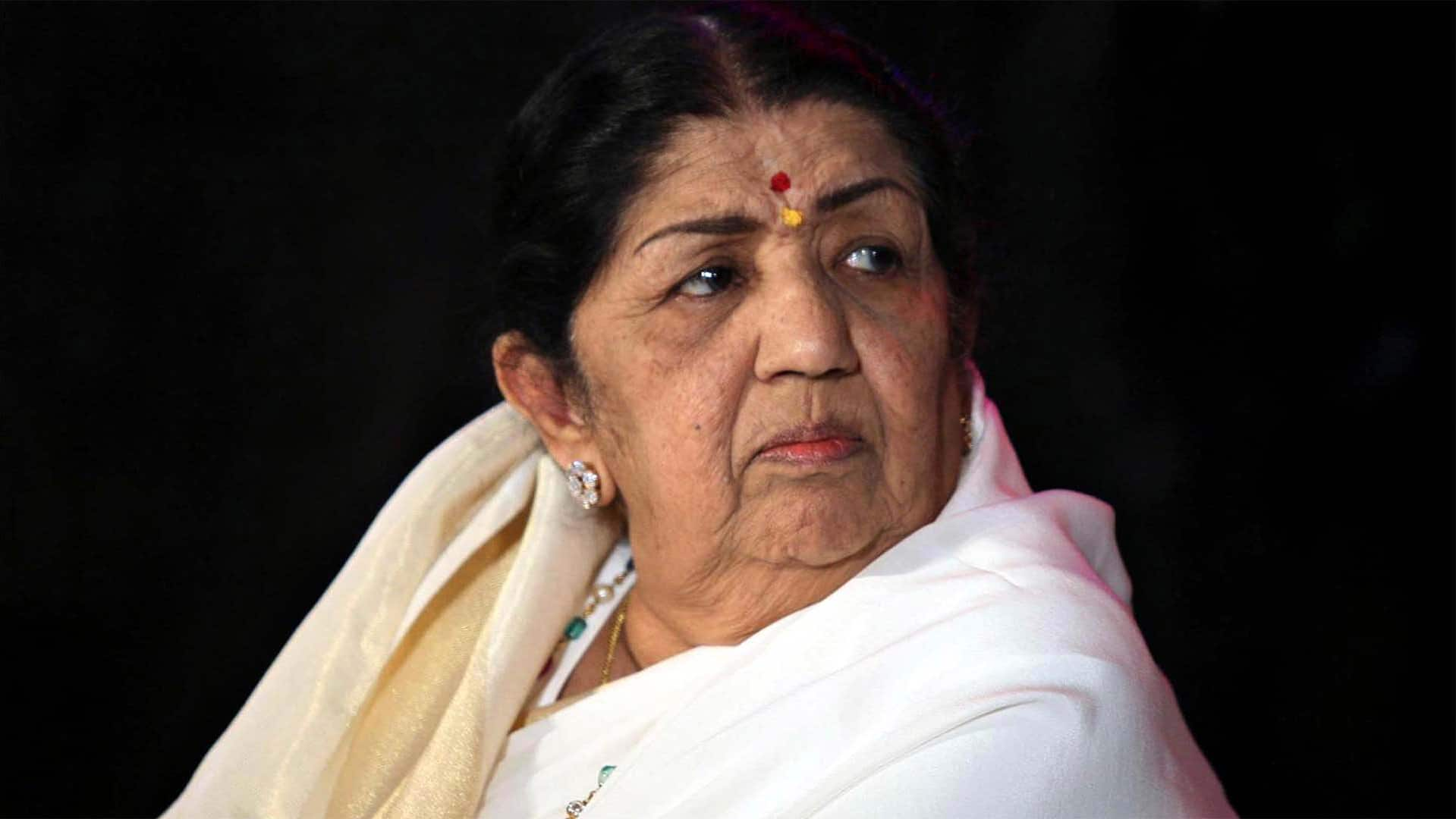UNIQUE CULTURAL HERITAGE OF PREHISTORIC SRI LANKA
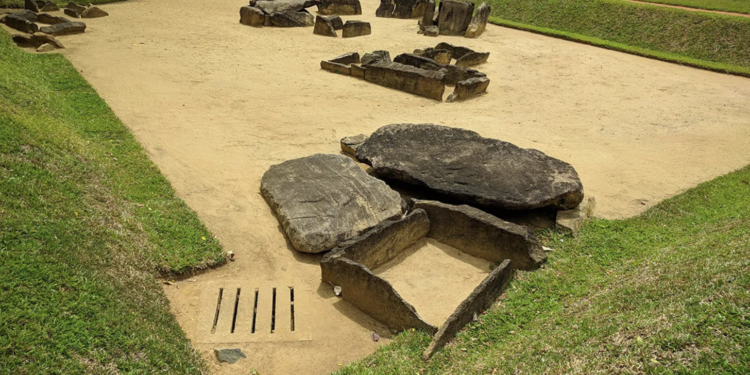
The Prehistoric Period of Sri Lanka ranges from 125,000 – 2,400 B C. The period from the end of the Prehistoric Period up to the beginning of the Historic Period is known by such varied names as Proto-historic, Early Historic and the Early Iron Age. This period is marked by the massive changes it underwent due to the introduction of technological and cultural innovations that were brought by the use of fired clay utensils moulded on the potter’s wheel, metal implements and the introduction of agriculture into the human livelihood. The over 100 megalithic tombs, discovered in all the environmental zones in Sri Lanka, bear significant archaeological evidence for the study of this period. The burial site at Ibbankatuwa in the Matale District in the Central Province of Sri Lanka is by far the biggest one discovered in Sri Lanka.
The Ibbankatuwa megalithic tombs, extending over a land area of 13 ha, are located 500 m away on the Kurunegala-Dambulla road, approximately 5 km southwest of the town of Dambulla, 148 km north-east of Colombo. The site was identified in 1970 when Dr. Raja de Silva, the then Archaeological Commissioner, conducted an excavation for the first time. Since then, during the latter part of the 80s, a team of local and foreign institutions comprising the Post Graduate Institute of Archaeology, the Central Cultural Fund and the KAVA (Kommission für Allgemeine und Vergleichende Archaeologie or Commission for General and Comparative Archaeology) of Germany have undertaken two excavations in 1988 and 1990 and discovered a cluster of 21 burial chambers. The radiocarbon dating of the charcoal at the site determined that it belonged to 600 B C.
Again, in 2015, the Central Cultural Fund conducted an investigation of these ancient tombs, covering an area of 10 m x 10 m, just west of the cluster of the tombs. When the earth was removed, the site revealed the existence of 47 additional tombs, of which 26 were stone urns containing the ashes of the dead. These tombs comprised of both circular and rectangular chambers, made of simple granite slabs. The chambers, some of which were covered with capstone, contained various sizes of earthen receptacles, 2-10 in numbers, having ashes of the dead, grave goods and tools used by the deceased, similar to the practices in ancient Egypt. The earthen receptacles, big and small, of various shapes, were of two types in red or black clay. In addition, clay pots; metal implements of copper and iron; beads of different shapes, made of a variety of material and painted with gold; necklaces, some with gemstones like carnelian, onyx and agate, found on the Indian sub-continent and other parts of the world, were found within them, indicating that they may have been imported. The site was made a public attraction in 2017.
This age-old cemetery shows that even in ancient times the dead were respected in due manner contrary to the generally held notion that earlier inhabitants of Sri Lanka practised animism. About 15 years back, no one seemed to be interested in visiting this historic site, although thousands of foreign and local tourists were going past the tombs almost every day ignoring their existence, as no sufficient publicity had been given by the authorities. Most travel agencies had not included even an optional visit to this site in their itineraries. Several families have been living in the site for many years without knowing that it was a place of great historical significance. In the past, some residents, reportedly, had even carried some of the artifacts away for their domestic constructions and other uses. The situation has since changed, as the Ibbankatuwa site now comes under the purview of the Central Cultural Fund of the Ministry of Education. School students throughout Sri Lanka are seen often at the site with their teachers narrating the history of the tombs.
Prof. Raj Kumar Somadeva, a Sri Lankan senior archaeologist who holds doctorates from the University of Kelaniya and the Uppsala University in Sweden, believes that there existed a ‘mature society’ in prehistoric Sri Lanka before the advent of Buddhism from India in 250 B C and there is reason to believe that these earlier inhabitants had even received the teachings of Buddha 200 years before the arrival of Buddhism. According to the scholar, the discovery of an ancient cemetery with a ‘stupa’ in it in a dense jungle at Karagahawela in the Monaragala District in Sri Lanka’s Uva Province is ample proof of it. Somadeva says that the earliest burial site in Sri Lanka dates back to 2,400 B C and there are 110 cemeteries in the dry zone of Ruhuna in southern Sri Lanka in addition to ancient caves of human settlements in the hill country. Somadeva opines that there is evidence of social stratification or the existence of an elite at Ibbankatuwa although the ashes of the deceased were deposited in two separate clay pots for men and women while two pots facing each other demarcated child burials.
The archaeologist says that excavations have been done in 10 locations so far but surveying and carbon dating have been done on less than 4 locations only, as the high cost the latter involves is really a handicap. “Moreover, we have to get at least three carbon dating readings for good results, as one is not enough, and therefore, the cost would be threefold”, he points out.
Speaking of technological innovations of the people of Ibbankatuwa, Somadeva says that they used the ‘potter’s wheel’, a machine used to shaping clay into round ceramic ware. Many scholars suggest that the first potter’s wheel was invented in ancient Mesopotamia sometime between 6,000 and 4,000 B C.
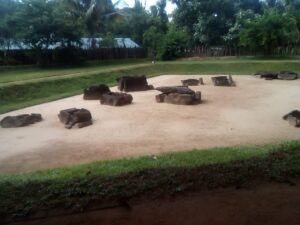

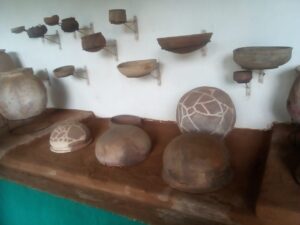
Photo credits / Rohan Leanage
In addition to this age-old technology, the people of Ibbankatuwa possessed furnaces to melt iron at a temperature of 1,500 ºC, says Somadeva.
Moreover, he says that even mascara sticks have been unearthed around the Ibbankatuwa site by his team, used by ladies of the time for their makeup.
Meanwhile, the late Sri Lankan archaeologist and prehistorian Dr. Siran Upendra Deraniyagala (1942-2021), a former Director-General of Archaeology, found evidence of the art of writing 200-250 years prior to the arrival of Arahat Mahinda with Buddhism. He came to this conclusion after conducting excavations at Salgahawatta in Anuradhapura in Sri Lanka’s North-Central Province. Commenting on the literacy of prehistoric dwellers of Sri Lanka, Somadeva says that letters identical to Brahmi script of ancient India were discovered as well on some of the artifacts at Ibbankatuwa.
The late Prof. Senarath Paranavithana (1896-1972), the renowned Sri Lankan archaeologist and epigraphist and a former Commissioner of Archaeology, who had examined the inscriptions on the clay pots found at this site said that they are similar to the inscriptions on the clay pots from the ancient Mohendojaro-Harappa civilization (2,500 B C) that flourished in the Indus Valley in present-day Pakistan.
Dr. Thusitha Wagalawatta is another archaeologist who has undertaken excavations at ancient burial sites in the island. He told Namo that 50-60 tombs have been identified around Dambulla in 5 locations. Wagalawatta, a research officer attached to the Department of Archaeology in Sri Lanka, said that in the Lower Yan Oya region 28 locations were discovered, 2 of them being megalithic tombs. In a 2000 ha area in this region he has excavated an arrowhead, parts of bones, beads, stone tools, and even a plough. The 142 km long Yan Oya is the fifth longest river in Sri Lanka that has its source at Ritigala mountain in central Sri Lanka and flows into the Indian Ocean at Pulmodai in the Eastern Province. “The discovery of an arrowhead is ample proof of the mastery of iron melting technique by the early Iron Age people of Sri Lanka, dating back to 900 B C well before the arrival of Prince Vijaya”, he affirmed. Prince Vijaya is a 6th century B C legendary king who came to Sri Lanka from Sinhapura, the capital of the king Sinhabahu, his father, in either eastern or northwestern India. According to Mahavamsa, a historical chronicle of Sri Lanka in Pali language, Prince Vijaya was sent into exile by the king with 700 followers as a punishment for his misdeeds and after his landing, founded the race of the Sinhalese, the majority community of present-day Sri Lanka.
Wagalawattta told Namo that the discovery of a plough dating back to 450 B C bears testimony to a ‘semi-agricultural society’ that was in existence in such a remote past. The archaeologist also added that presumably the trade relations with other countries by exporting and importing goods and commodities were also thriving during this era.***

